November is the final month to prepare the garden for winter. It’s rather like tucking children into bed at night: They have played all day, and now they’re tired. There’s the bath-time ritual, followed by a quiet story before they snuggle under the quilt for several blissful hours of rest — for
both of you.
The garden has been playing hard and growing for more than eight months. Now it’s time to get it clean and tidy before its winter rest. Just a few hours spent in the garden this month will ensure that you
both reach spring with renewed vigor and enthusiasm.
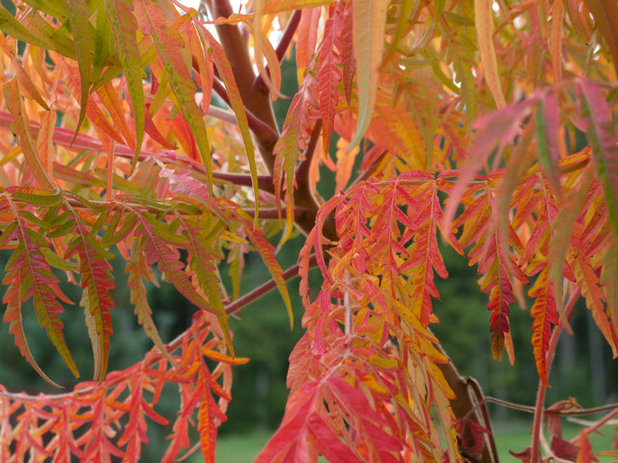
Le jardinet
Keep gathering those leaves. One of the beautiful aspects of autumn is that the wonderful tapestry of fall leaves is woven over a period of several months. Shades of crimson, amber and gold come and go as each tree and shrub takes its turn in the spotlight. For us, however, it means that just when we thought we had finished sweeping up leaves, we have to start all over again. Consider it your November workout, grab your rake and gather nature’s black gold just as you did last month.
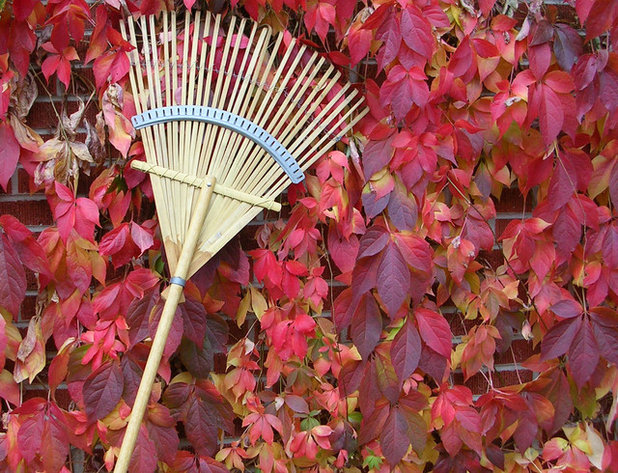
Jocelyn H. Chilvers
You have several options: Add leaves to your compost bin, shred them with the mower and reapply them to a shrub border as winter mulch or discreetly corral them in a wire cage somewhere handy so you can spread them next year when they have decomposed into rich, dark mulch.
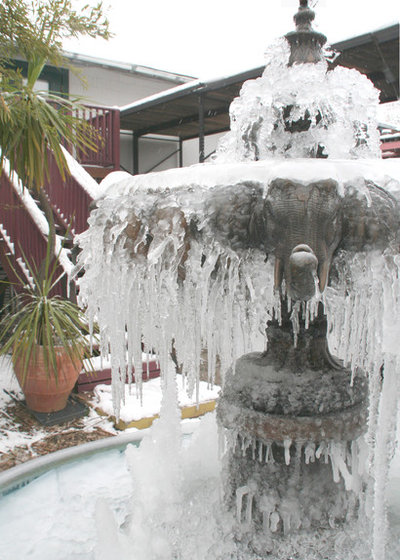
AW POTTERY
Protect your water features. Some of us are procrastinators, and some of us are just plain forgetful. This photograph shows what happens to fountains during a hard freeze in either case.
To avoid creating such dramatic ice sculptures, remember to drain small fountains and either store them in the garage for the winter or cover them to prevent water entering and freezing. Small submersible pumps are also best removed and stored indoors until spring.
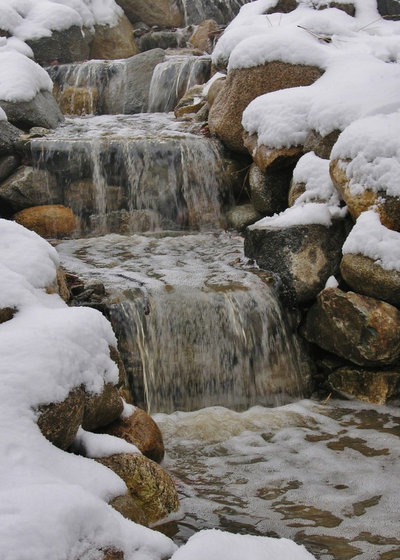
The Pond Pros Of Southern California
Larger ponds and waterfalls may have a sufficient volume of water cascading through them that the entire body of water will not freeze, and the pump is either too deep to be affected or is in a protected enclosure aboveground. If you're in doubt, contact your local pond supply company for advice.

Jocelyn H. Chilvers
This is also the time to winterize your irrigation system. We use a simple drip watering system for all our containers as well as for our vegetable garden. The hoses can be left in place, but we disconnect the battery-operated timers and bring them inside for the winter.
Landscape irrigation companies usually offer a winter service to drain the lines if necessary — contact them today.
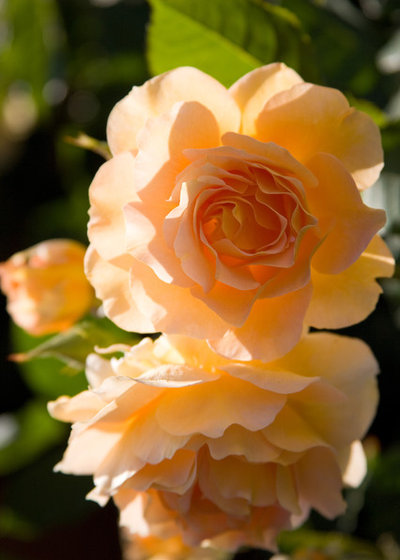
Margie Grace - Grace Design Associates
Take care of your roses. Traditionally, rose pruning is done in early to mid-February, but I also like to do a mini prune at this time of year — especially to taller roses.
I remove up to a quarter of the rose height to prevent "wind rock." In exposed areas taller roses can be susceptible to being pushed around by strong winter winds, creating large gaps at the soil level, which can then allow freezing rain, snow and ice to reach the roots. Reducing the height of the roses a little can prevent this.
Don’t worry about cutting to an outward-facing bud, as you will be pruning properly in spring.
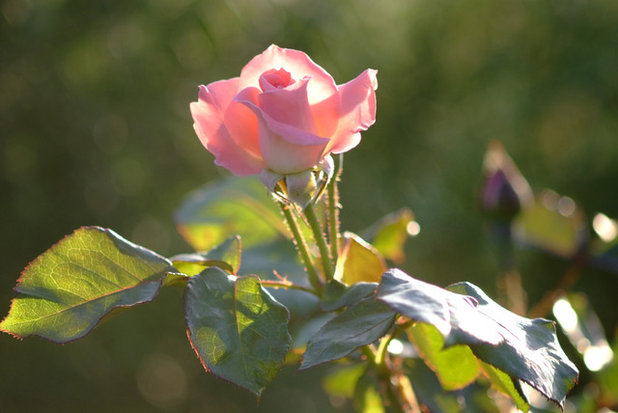
Carolyn Chadwick
I also apply several inches of good compost around the base of the roses as a winter blanket, not to be removed until the next growing season.
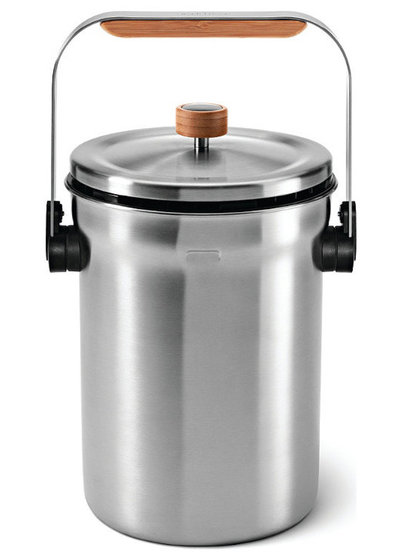
FRONTGATE
simplehuman Stainless Steel Compost Pail - $59.50
Add a few inches of compost. I’m a lazy gardener. If I apply compost to the garden now, the rains will help its nutrients leach into the soil, and the worms will till it while I’m nice and cozy indoors. Some gardeners prefer to mulch in spring. If your garden soil is in poor shape, I recommend adding compost in both fall
and spring for three years and then once a year after that. Both seasons have their pros and cons, so make it work for your schedule — just do it!
An attractive compost pail, like this one, will put food scraps to good use and reduce the number of treks out to the garden compost bin.
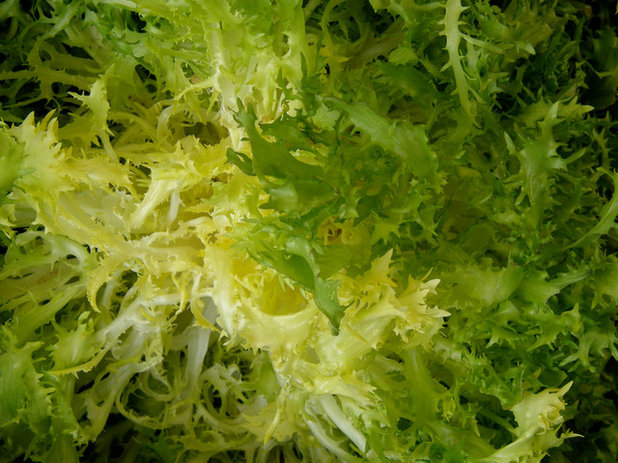 Grow hardy edibles.
Grow hardy edibles. It’s very satisfying to gather your own vegetables in winter. Leeks, parsnips, cabbage, kohl rabi and Brussels sprouts are just a few of the easy cool-season crops that can withstand winter chills. Provide a layer of floating row cover or a cold frame, and your options expand to include carrots, lettuce and more.
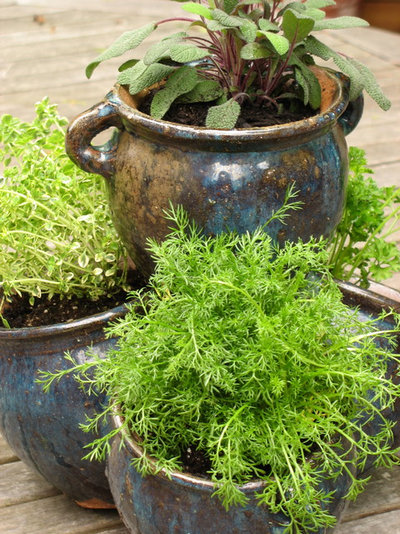
Le jardinet
If that seems like too much work, at least keep an herb pot by the back door so you can add some fresh parsley or rosemary to perk up your winter dishes.
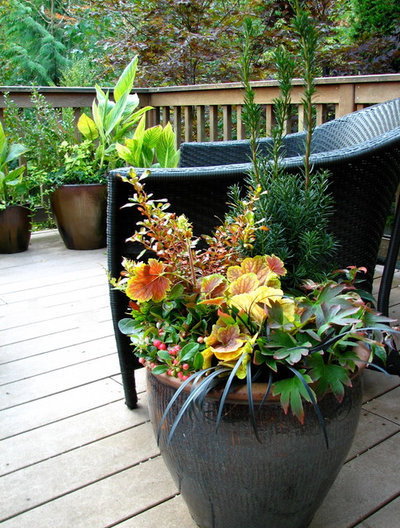
Le jardinet
Set up a container garden. With the aromas of warm apple cider and homemade pumpkin pie wafting through your home, you know it won’t be long before friends and neighbors stop by. Welcome them with a colorful container garden on your porch or patio.
It’s easy to spruce up existing plantings by tucking in a colorful pumpkin or seasonal accent among the foliage.
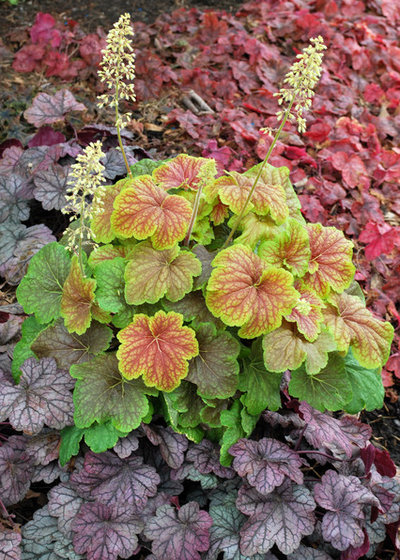
Terra Nova® Nurseries, Inc
Starting from scratch? Look for warm-colored foliage —
coral bells (Heuchera) are a great choice and come in a myriad of colors, from lime to mahogany, as you can see in this photo.
One of my current favorites is
‘Delta Dawn’ (center), which is a wonderful shade of buttery yellow accented with rosy hues.
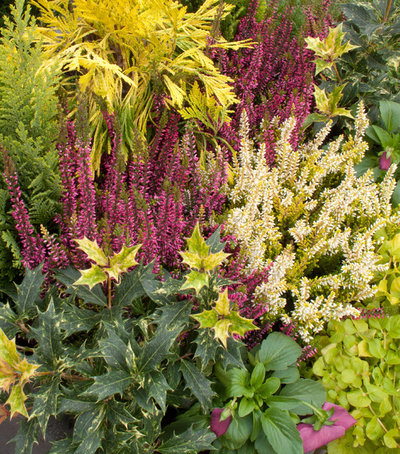
Le jardinet
The
autumn fern (Dryopteris erythrosora) is another mainstay for fall, with its fronds turning to shades of copper as temperatures drop.
For a little pizzazz,
‘Goshiki’ false holly (
Osmanthus heterophyllus ‘Goshiki’), shown here, can be relied on for great color in sun or partial shade. Its holly-shaped green and yellow variegated foliage partners well with bright gold conifers and colorful heathers.
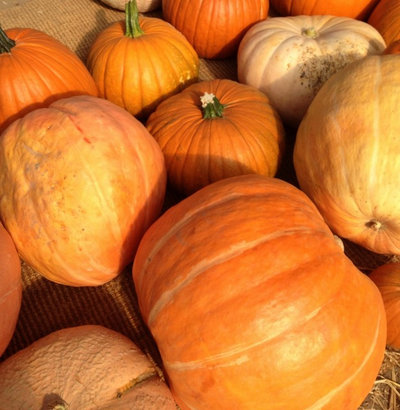
Le jardinet
Become a child again. I visited a pumpkin farm last weekend. I felt a bit silly really. There were all these young families with excited toddlers on a treasure hunt to find the perfect pumpkin to carve, tottering through the rustling corn maze and playing on the old tractors. I began to wonder whom I could "borrow" a child from!
But of course you are as old as you feel. So you’ll find me crawling through the gourd tunnels, looking for the wartiest pumpkin and kicking through the leaves with the children.
Fall is for fun — have a wonderful month.
More guides to Pacific Northwest gardening | Find your U.S. garden checklist





